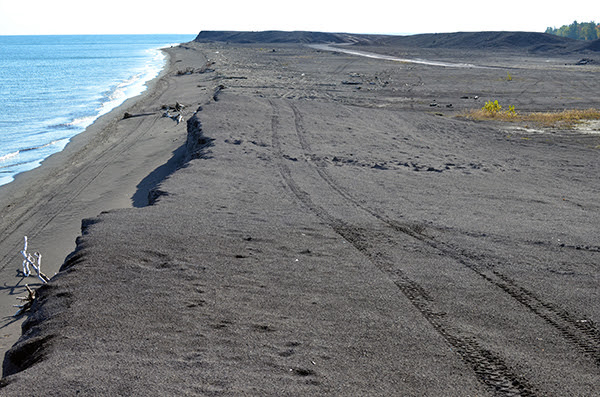
|
Project backed by Great Lakes Restoration Initiative funding
With dredging work set to start off the Keweenaw Peninsula in Lake Superior, the Buffalo Reef Task Force has prepared a summary responding to public comments made on a Draft Preliminary Alternatives Analysis issued earlier this year.
The alternatives analysis issued in February briefly described 13 strategies for managing historic copper mine tailings threatening to destroy spawning habitat and recruitment areas important to Lake Superior whitefish and lake trout in and around Buffalo Reef.
The reef is situated off the mouth of the Big Traverse River in Houghton County.
Mine tailings, called stamp sands, were dumped a century ago into Lake Superior at Gay, Michigan, during processing of copper ores from the Mohawk and Wolverine mines. Since that time, with wave action, the sands have moved south along the shoreline toward the reef.
The task force sought public comment on whether there are additional management strategies the group should consider and whether any adjustments should be made to the management strategies or risks described in the draft analysis. The public comment period closed March 8.
The Responsiveness Summary compiled by the task force is now available.
“The comments we received will be incorporated into the draft,” said Stephanie Swart, a Buffalo Reef Task Force Steering Committee member and lake coordinator with the Michigan Department of Environment, Great Lakes and Environment. “Our next steps are to finish the Preliminary Alternatives Analysis by including cost estimates and a tentative ranking of the alternatives.”
Swart said the task force plans to release the completed Preliminary Alternatives Analysis in June and hold a public meeting in July in Lake Linden. The analysis will be used to select the top two to four best alternatives. Detailed analysis of those options will then begin in the fall of this year.
Meanwhile, dredging of the Grand Traverse Harbor and the “trough” area, situated north of Buffalo Reef will begin in the next week or two and is expected to continue into July.
This project is being executed in cooperation between the U.S. Army Corps of Engineers, U.S. Environmental Protection Agency, Keweenaw Bay Indian Community, the Michigan Department of Natural Resources and Michigan Department of Environment, Great Lakes and Energy to save the 2,200-acre Buffalo Reef.
To find out more about the effort to save Buffalo Reef, including media photos, visit www.Michigan.gov/BuffaloReef.